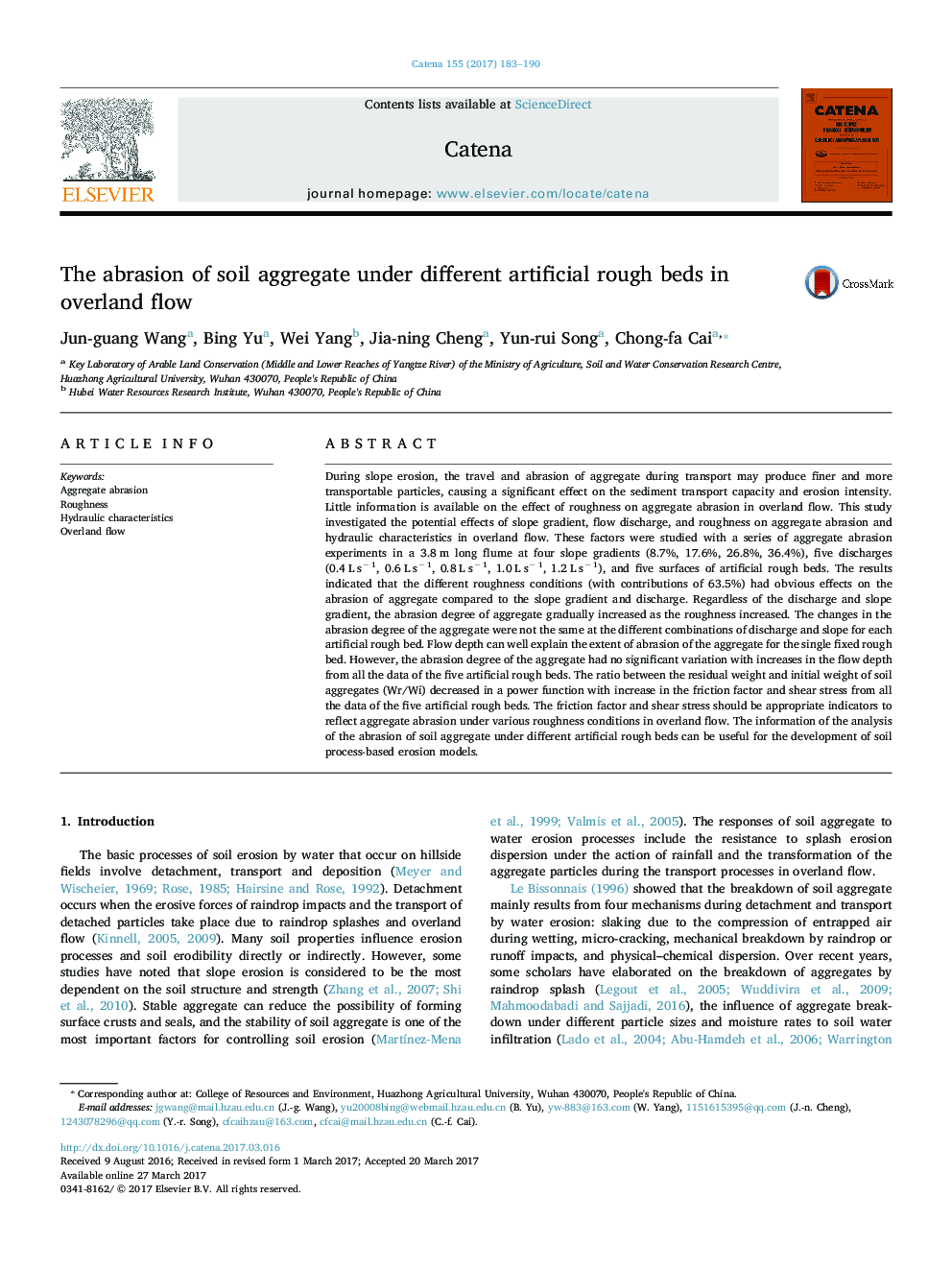| کد مقاله | کد نشریه | سال انتشار | مقاله انگلیسی | نسخه تمام متن |
|---|---|---|---|---|
| 5770136 | 1629199 | 2017 | 8 صفحه PDF | دانلود رایگان |
- Aggregate abrasion experiments were carried out in a flume at five surfaces of artificial rough beds.
- The different roughness conditions had obvious effects on the abrasion of aggregate.
- Flow depth can well explain the extent of abrasion of the aggregates for the single fixed rough bed.
- Friction factor and shear stress were appropriate indicators to reflect aggregate abrasion in overland flow.
- The results of the analysis can be useful for the development of soil process-based erosion models.
During slope erosion, the travel and abrasion of aggregate during transport may produce finer and more transportable particles, causing a significant effect on the sediment transport capacity and erosion intensity. Little information is available on the effect of roughness on aggregate abrasion in overland flow. This study investigated the potential effects of slope gradient, flow discharge, and roughness on aggregate abrasion and hydraulic characteristics in overland flow. These factors were studied with a series of aggregate abrasion experiments in a 3.8 m long flume at four slope gradients (8.7%, 17.6%, 26.8%, 36.4%), five discharges (0.4 L sâ 1, 0.6 L sâ 1, 0.8 L sâ 1, 1.0 L sâ 1, 1.2 L sâ 1), and five surfaces of artificial rough beds. The results indicated that the different roughness conditions (with contributions of 63.5%) had obvious effects on the abrasion of aggregate compared to the slope gradient and discharge. Regardless of the discharge and slope gradient, the abrasion degree of aggregate gradually increased as the roughness increased. The changes in the abrasion degree of the aggregate were not the same at the different combinations of discharge and slope for each artificial rough bed. Flow depth can well explain the extent of abrasion of the aggregate for the single fixed rough bed. However, the abrasion degree of the aggregate had no significant variation with increases in the flow depth from all the data of the five artificial rough beds. The ratio between the residual weight and initial weight of soil aggregates (Wr/Wi) decreased in a power function with increase in the friction factor and shear stress from all the data of the five artificial rough beds. The friction factor and shear stress should be appropriate indicators to reflect aggregate abrasion under various roughness conditions in overland flow. The information of the analysis of the abrasion of soil aggregate under different artificial rough beds can be useful for the development of soil process-based erosion models.
Journal: CATENA - Volume 155, August 2017, Pages 183-190
